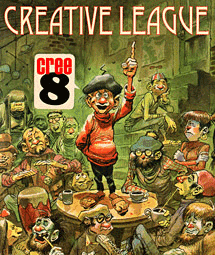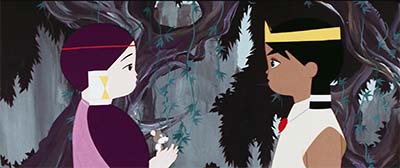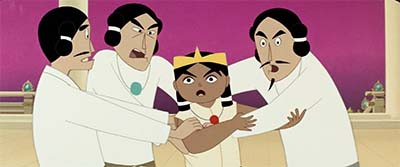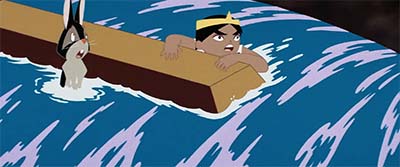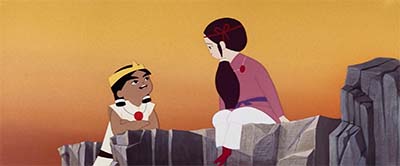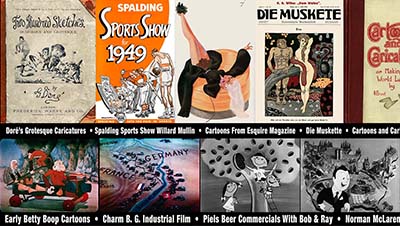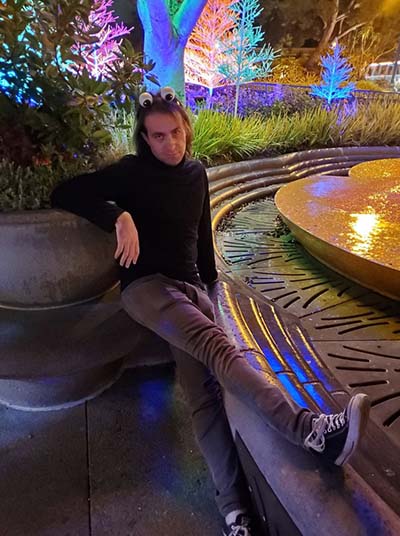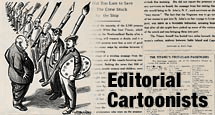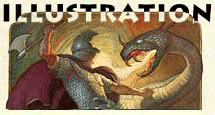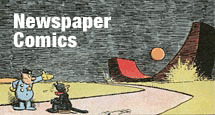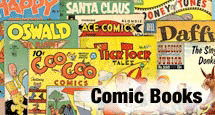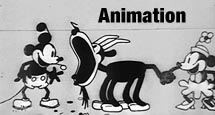
Members Only Download
Every other month, members of Animation Resources are given access to an exclusive Members Only Reference Pack. These downloadable files are high resolution e-books on a variety of educational subjects and rare cartoons from the collection of Animation Resources in DVD quality. Our current Reference Pack has just been released. If you are a member, click through the link to access the MEMBERS ONLY DOWNLOAD PAGE. If you aren’t a member yet, please JOIN ANIMATION RESOURCES. It’s well worth it.
MEMBERS LOGIN To Download Video
JOIN TODAY To Access Members Only Content
The Little Prince & The 8 Headed Dragon![]()
Yugo Senikawa / Toei Animation (1963)
The Little Prince and the Eight-Headed Dragon was released in Japan in 1963. The sixth animated feature produced by Toei Animation, it was filmed in ToeiScope, an anamorphic widescreen format similar to CinemaScope.
The artist most responsible for the look of the film was Yasuji Mori. The graphically simple designs and strong color palette marked a clear break with the earlier Toei animated films. Before this, Japanese animated features tended to follow the style of Disney films; and although there is certainly a nod to the dragon in Disney’s "Sleeping Beauty", the overall look of the film is much more graphic and stylized than anything done in Japan up to that point.
The story is based on Shinto legends from the eighth century A.D, specifically the story of the headstrong storm god Susanoo and his battle with Yamata no Orochi, the eight-headed dragon. Susanoo is depicted in the film as a young boy. His mother dies, but his father Izanagi is unable to break the news to him. Instead, he tells the boy that his mother has gone to be with the gods in heaven. Susanoo takes this literally and becomes angry, setting off to find her, accompanied by a rabbit named Akahana.
The pair build a boat to sail to the heavens, and they do battle with the Sea God in the form of a giant fish. They then set out for the Crystal Palace in the Land of the Night, overseen by Tsukuyomi, the moon god. Susanoo fails to find his mother there and becomes angry, starting a fight with the crystal warriors. The ruckus damages the crystal castle, but Tsukuyami restores it, and directs the boy to the Land of Fire. As they leave, the Moon God gives Akahana a magic ice crystal.
In the Land of Fire, the pair join up with a new companion, Titan Bo, a friendly giant. With the help of Akahana and the magic crystal Susanoo defeats the Fire God. They depart from the Land of Fire to journey to the Land of Light. Here they meet the Shinto sun goddess, Amaterasu. Susanoo’s temper causes him to start a fight again, destroying part of her castle. This causes Amaterasu to hide in a cave, plunging the world into darkness. Her followers dance and perform to lure her to come back out, and are finally successful at bringing the light of the sun back to the world.
Susanoo’s long and dangerous voyage has failed to lead him to his mother. Eventually the journey brings the three friends to the Izumo Province. There Susanoo meets a girl, Princess Kushinada, who reminds him of his mother. They become good friends, but her family tells Susanoo about a seven headed dragon who has claimed their other seven daughters as sacrifices. Susanoo decides to defend Princess Kushinada from the dragon by slaying the terrifying monster. The trio sets out to the Dragon’s lair, and on the way the sun goddess Amaterasu sends a magical flying horse to Susanoo. He breaks the horse and rides it in the climactic battle with the eight-headed dragon. At the end, Susanoo’s mother’s spirit briefly appears to tell him she cannot return with him. Susanoo tells her that he no longer wants to bring her home. He has fallen in love with Princess Kushinada and has decided to live with her in the Izumo Province.
This landmark film is often cited as one of the best Japanese animated features, and you will certainly recognize its influence on Genddy Tartakovsky’s "Samurai Jack". Animation Resources is proud to be able to share this rarely seen film in a new high definition widescreen restoration. There are no subtitles, but we are sure you will be able to follow the story without them. We have digitized the video so you can still frame through and study the brilliant effects animation. We hope you find this film useful to your studies.
MP4 Video File / HD Widescreen / 1:26:00 / 1.56 GB Download
MEMBERS LOGIN To Download Video
JOIN TODAY To Access Members Only Content
Not A Member Yet? Want A Free Sample?
Check out this SAMPLE REFERENCE PACK! It will give you a taste of what Animation Resources members get to download every other month!





